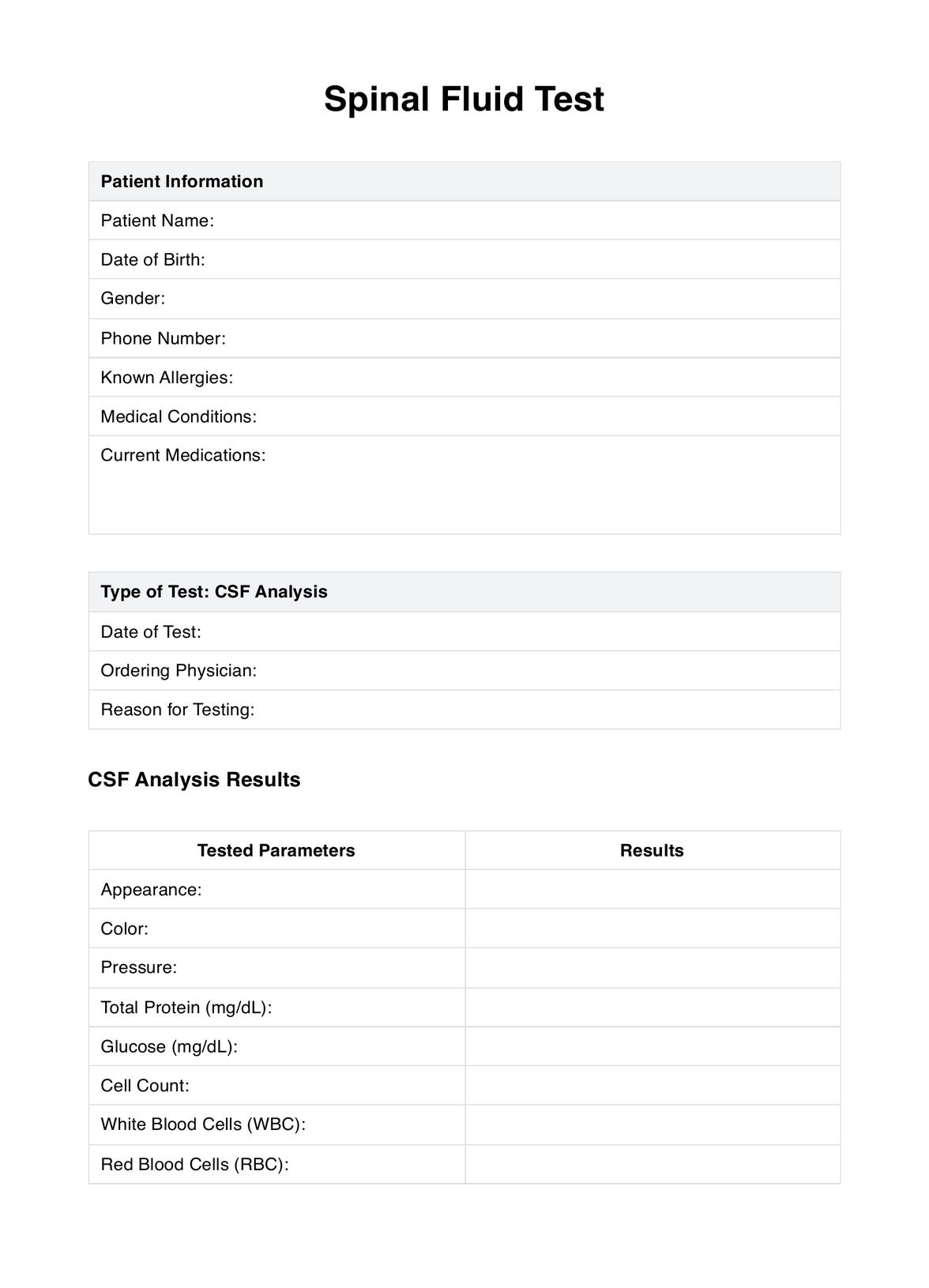It is typically requested by neurologists, neurosurgeons, and other healthcare professionals specializing in neurological disorders who suspect conditions like infections, multiple sclerosis, or central nervous system issues in their patients.

Spinal Fluid Test
Learn about the Spinal Fluid Test and its role in diagnosing infections, inflammatory diseases, tumors, bleeding, and other neurological disorders.
Spinal Fluid Test Template
Commonly asked questions
The tests are used when there is a need to diagnose or monitor neurological conditions, including infections like meningitis, inflammatory diseases such as multiple sclerosis, brain tumors, bleeding in the brain or spinal cord, hydrocephalus, and the assessment of certain neurological disorders.
It involves a healthcare professional performing a lumbar puncture, where the patient lies on their side, and a sterile needle is inserted into the lower back to collect cerebrospinal fluid (CSF). The collected CSF is then sent to a laboratory for analysis, including glucose and protein levels, cell counts, and microbiological examination if necessary.
EHR and practice management software
Get started for free
*No credit card required
Free
$0/usd
Unlimited clients
Telehealth
1GB of storage
Client portal text
Automated billing and online payments











